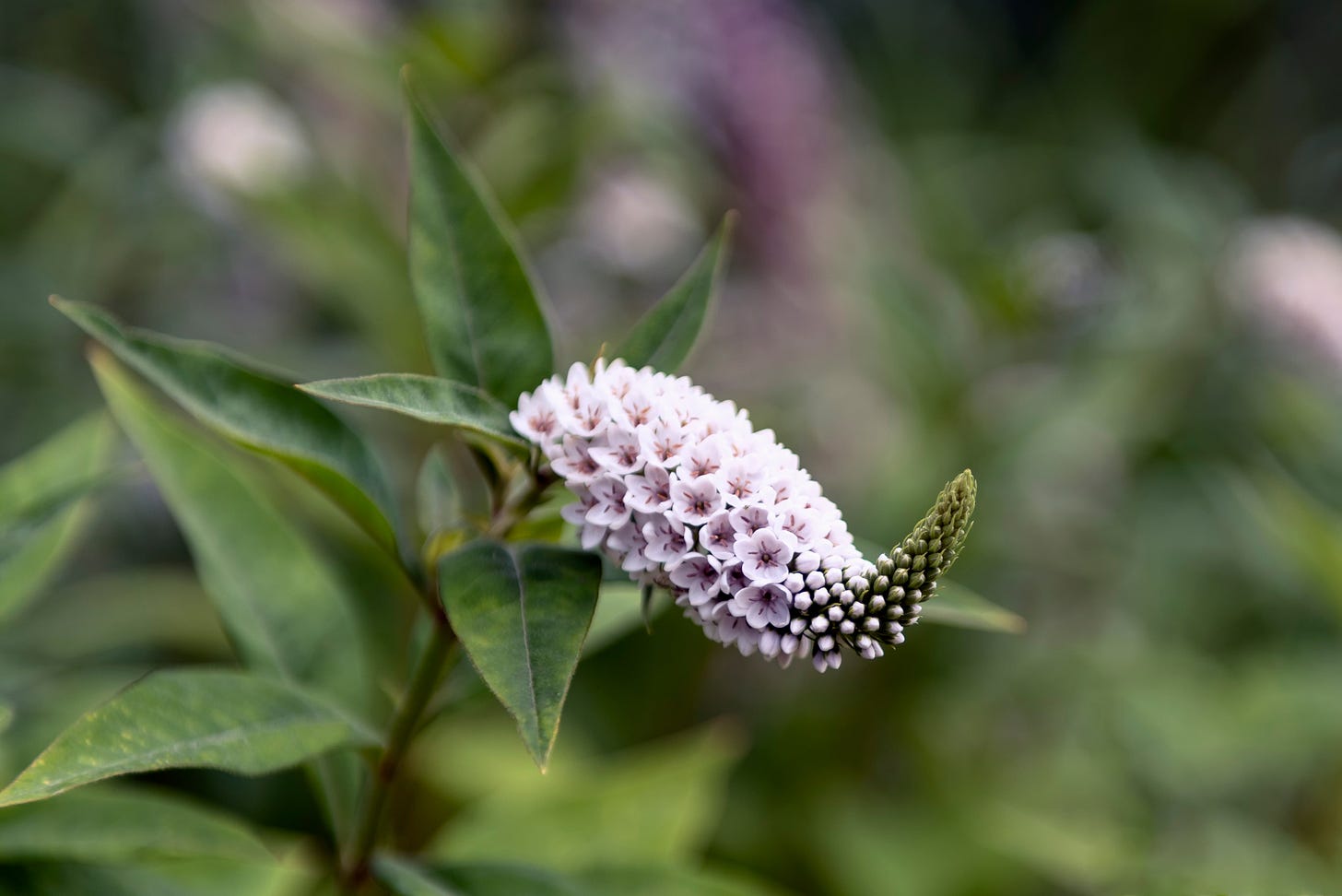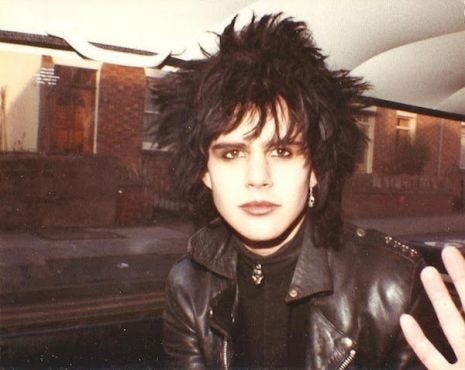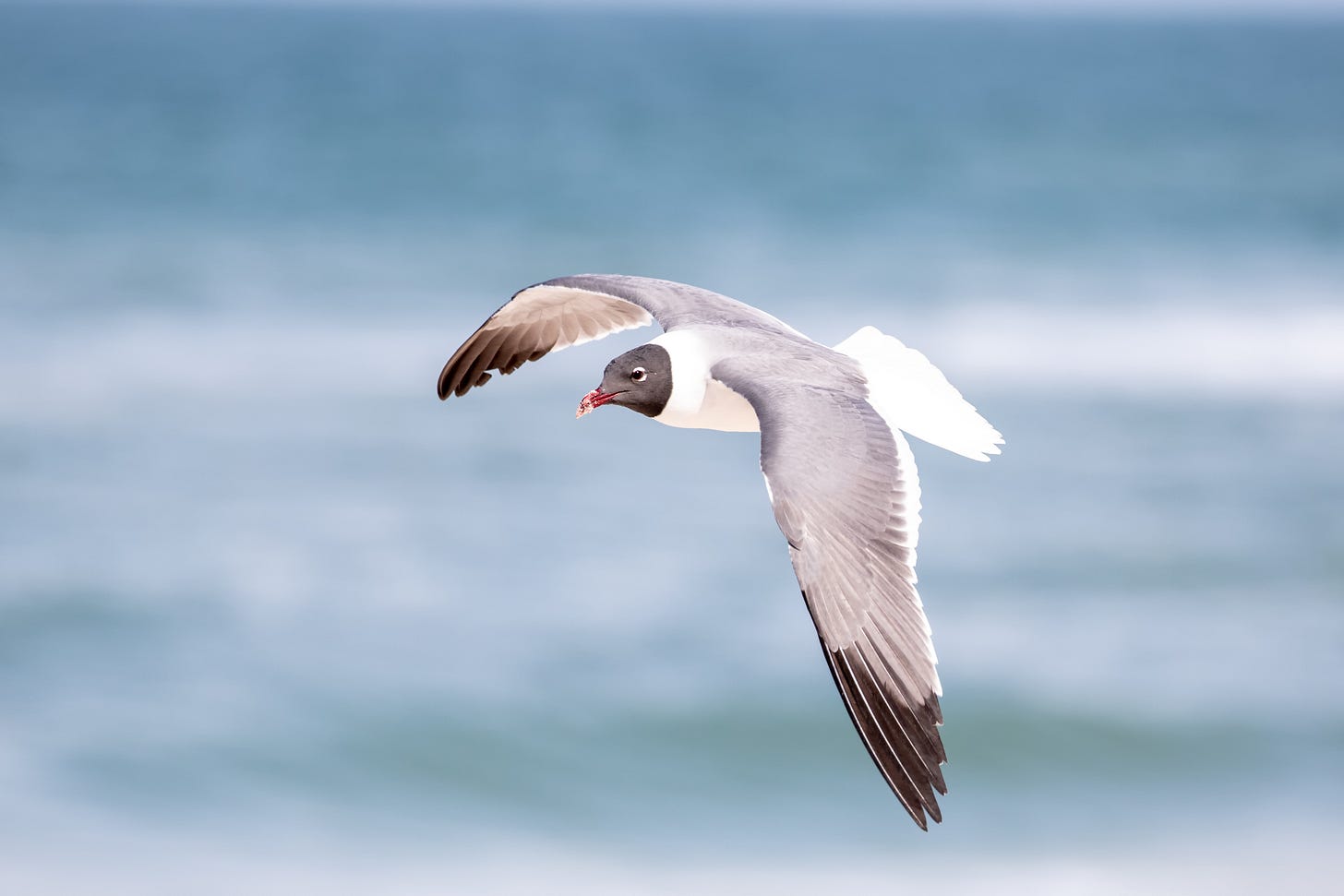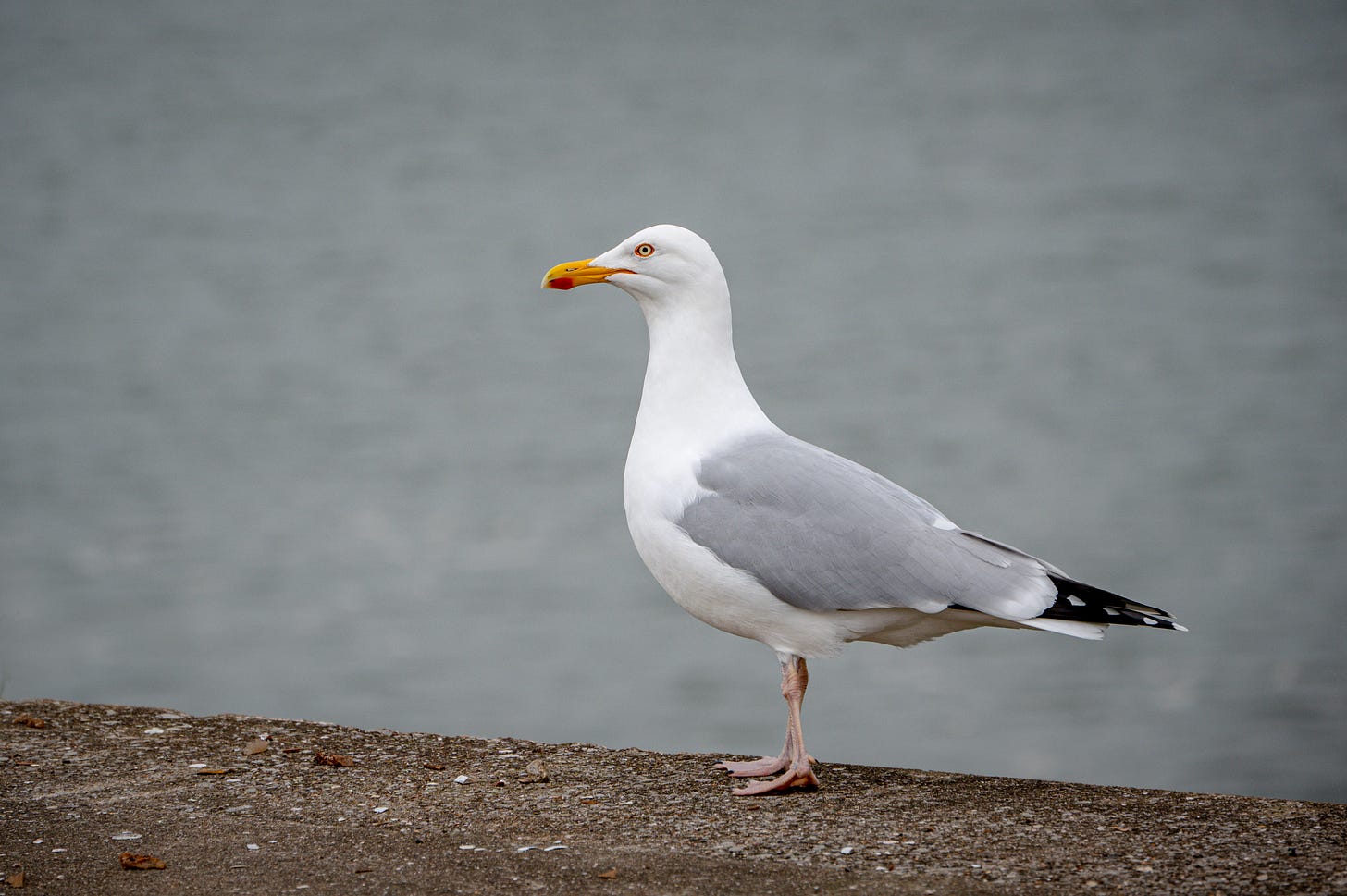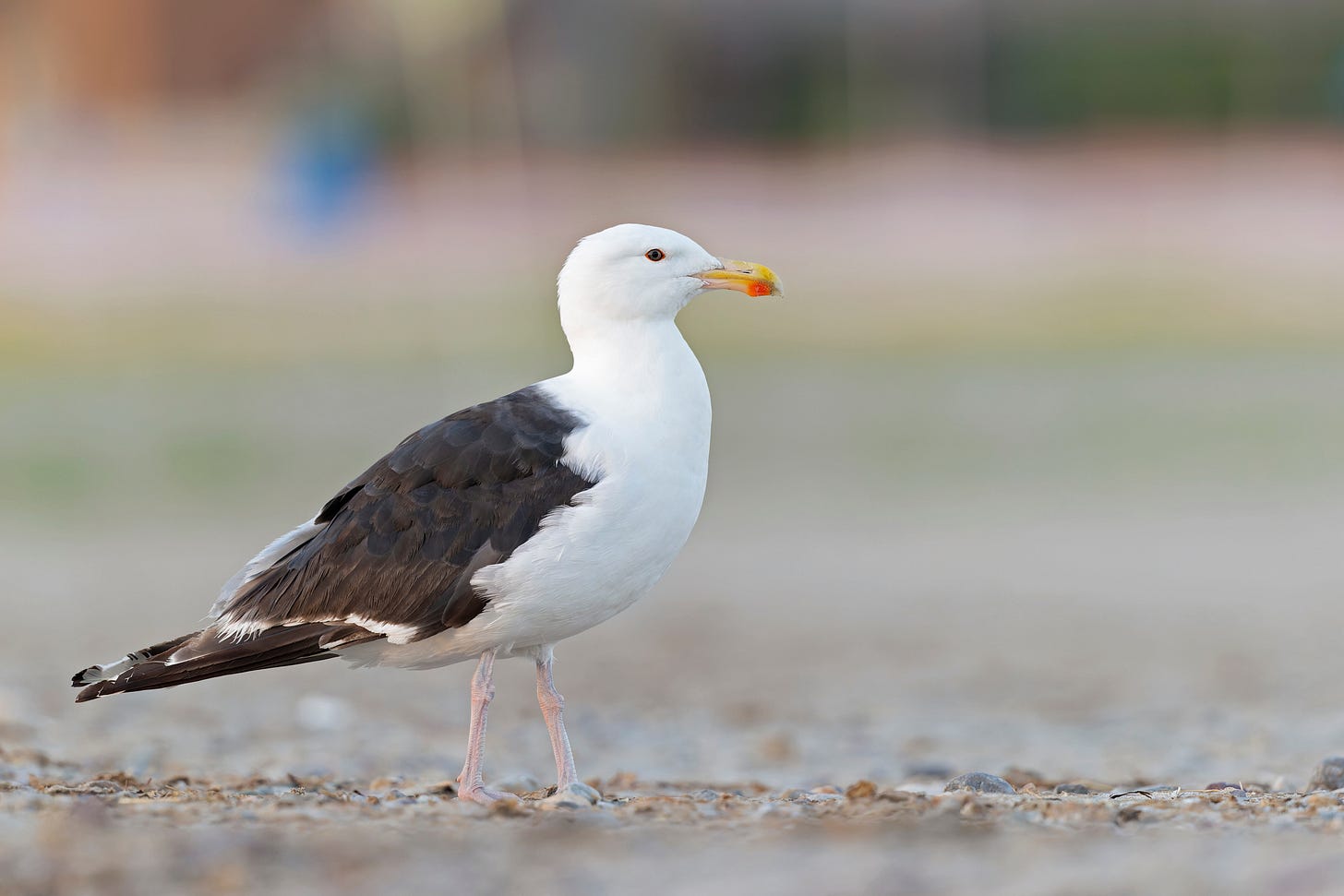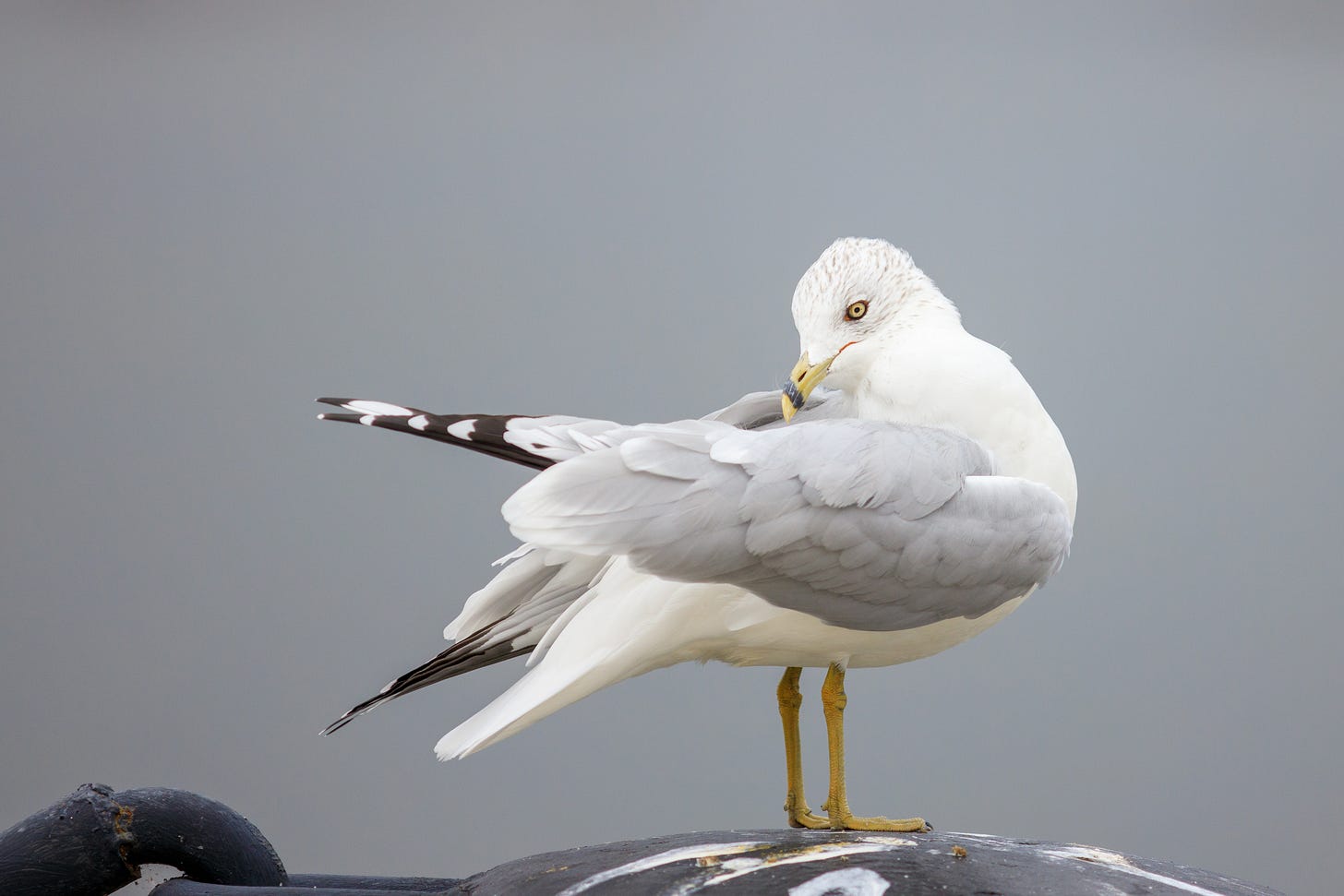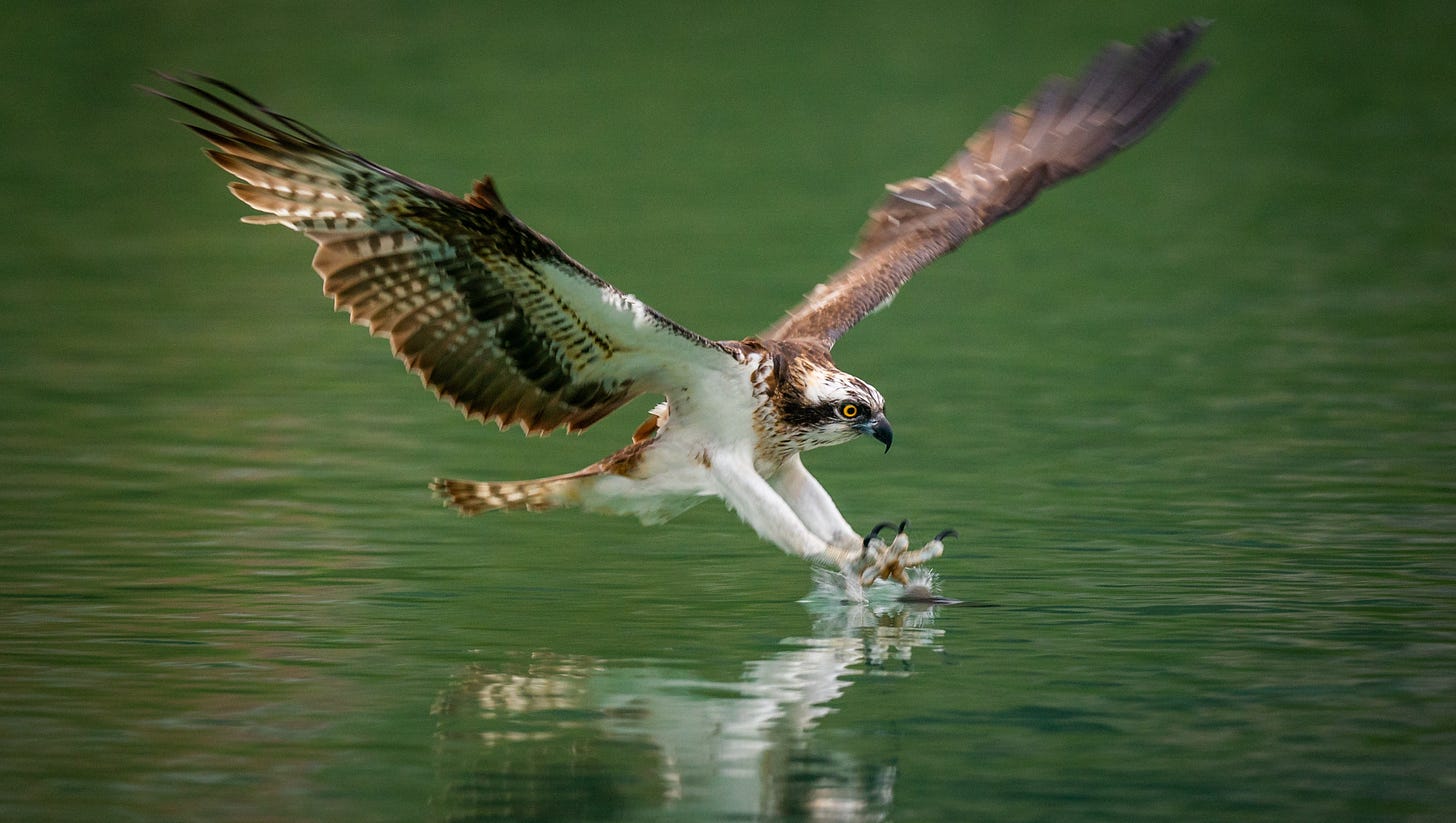🚨WEE-oO WEE-oO WEE-oO—Out of Office Alert!🚨
Unmark your calendars! We’re taking this forthcoming Saturday off. That’s the last one in June: June 29th. So NO regularly scheduled walk then! WEE-OO!
The whiteboard will be out. Show up anyway and jot down what you notice! You’ll be surprised by what happens when you bird without a guide—just your senses, your animal intelligence, your phone either hurled into a garbage can or on airplane mode still ready to Merlin sounds and take zoomed-in pics.*
*for later identification via iNaturalist!
MICRO-SEASONINGS
Corporate humanoid [dead inside]: It’s almost Q3.
Source, Great Unity, god-babe MOTHER NATURE [alive everywhere]: Current Japanese micro-season is Plums turn yellow. As for McGolrick Park, perhaps New York City and even larger swathes of the eastern US, we notice—
Curling Gooseneck Loosestrifes • First Heatwave • Serviceberry exhaustion
Did we miss anything? We’ll declare this micro-season’s “official” name at year’s end.
The native range of Gooseneck Loosestrife is China and Japan. In China, most commonly in the Chaoshan region, the plant’s leaves are used in salads, stir-fried dishes and soups
JUNE 22, 2024 — SATURDAY
Conditions: Heat Domed • Attendance: 66 or so • Vibrations: Soap-boxy
Saturday birds: Common Grackle · Laughing Gull (flyover) · Downy Woodpecker (heard) … And the virtually always present in urban parks like McGolrick: Rock Pigeon, European Starling, American Robin, House Sparrow and Mourning Dove.
Saturday tree: Platanus × acerifolia a.k.a. London plane, courtesy of Tree Babe Deb. Be sure to play with NYC’s remarkable tree map here.
Pic of the day via mary_cao:
MICRO-LESSON: NEW YORK GULLS
Seagull is a misnomer. There’s no such bird nor type. Just say gull.
So begins our descent into the treacherous, sodden labyrinth that is gull identification. A purview of the bravest, saltiest, squall-happy, peg-leggiest of birders—distinguishing gull species from one another is hard.
Why so hard? For one, gull species all kinda look alike. Observe:

For two, although gulls aren’t sexually dimorphic—male vs. female plumages are identical—they reach adulthood slowly, and on their way go through—not unlike your correspondent in his goth era—phases. So instead of your standard one-to-two looks-to-know per species, there can be, for example: juveniles, 1st winters, 1st summers, 2nd winters, Adult nonbreeding and Adult breeding.
Overwhelmed Yargh.
Top Gulls
Let’s not fret about ID difficulties. Let’s instead focus on the breeding adult plumage of NYC’s 4 most common gulls. Knowing them will take you pretty darn far.
Laughing Gull—The it gull of New York City’s summers. And it’s not just a clever name. These black-headed baddies ha and cackle like broom-straddling witches. Their flyover bodies are svelte. Their bills: long and red and slightly drooped at the tip. (Hard to see above.) Laughing Gulls head south come fall. Notice them now.
Herring Gull—The most common and widespread of all gulls in the Northern Hemisphere, Herrings are classically styled, gray-backed, year-round New Yorkers. They rock little red-orange marks on their lower bills and sit atop pretty pink stems.
Great Black-backed Gull—Like Herrings, these year-round New Yorkers also rock red-orange marks on their lower bills over pretty pink stems. So instead keep an eye out for their namesake, high-contrast black (not gray) backs. These birds are also LARGE.
Ring-billed Gull—Another classic gray back. Comparable and almost as omnipresent as Herrings, so look instead for black beak marks that resemble maw-closing rubber bands and yellow legs.
Skiff Notes
Black head · Sky cackles · NYC summer-breaker: Laughing Gull
Red-orange mark on lower bill · Pretty pink legs · Gray back: Herring Gull
Black back · Large: Great Black Backed Gull
Lobster claw rubber band beak mark · Yellow legs: Ring-billed Gull
Is this an oversimplification? Yes. Is there way more to learn? Yes! Do we honor Mother Nature and her freaky lover Poseidon when we pay the most attention to details? Enthusiastic Yargh.
ON NOTICE: FLYOVER OSPREY
Alliteration be damned, the Seattle Seahawks should be called the Seattle Ospreys (ˈäsprēs/ or aws·prays).
Sea Hawks or Seahawks—they don’t exist. Ospreys—birds of prey who exclusively hunt surf, never turf—very much do.
First seagulls, now seahwaks. We’re killing all of your shorebird darlings today, reader. Sorry, not sorry.
While these airborne orcas won’t ever land nor hunt in McGolrick Park—at least not until we dig + fill with water + stock with fish an unsanctioned lake at one of the park’s dirt patches—we do occasionally notice them flying overhead.
To notice Ospreys, scan the skies for birds of prey with especially long, stretched, and just bent M-shaped wings. To distinguish from last week’s Turkey Vulture, find the bright body white betwixt dark “carpals,” the M-shape’s subtly pointed tops.
Ospreys are of course very noticeable flying over, perched and even hunting, at water features in any size-able Brooklyn or North American Park. Learn more here
An Augur Buzzard is the live mascot for the Seattle Seahawks. Species confusion abounds
ANNOUNCEMENTS, REQS, SONG COVERS
Anthems for a Twenty or Thirty-something Year‐Old Girl Newbie Birder
Bookend! We’re taking the last Saturday of June off. So, NO REGULARLY SCHEDULED WALK ON THE 29TH! Go out anyway! You don’t need a guide. Just:




